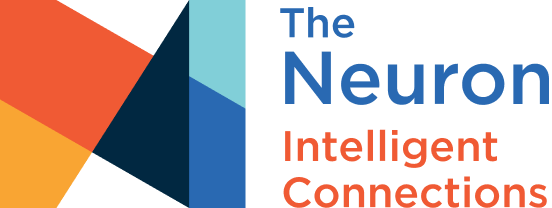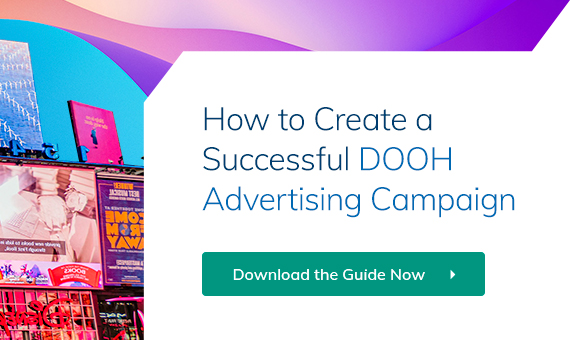Programmatic DOOH (pDOOH) is fast-becoming one of the most reliable and effective digital marketing tactics for SMBs to engage target audiences outside the home with compelling and memorable advertising campaigns. In this post, we break down the key benefits of pDOOH, and reveal how you can use programmatic DOOH advertising to engage and close more customers.
The Benefits of Programmatic DOOH
It’s been a tough year for the advertising industry – and the out-of-home (OOH) segment is no exception. In line with total ad revenues across all types of advertising (see Fig. 1), digital out-of-home (OOH) advertising revenue dropped significantly in 2020 – yet another victim of the global crisis that left no industry unaffected.
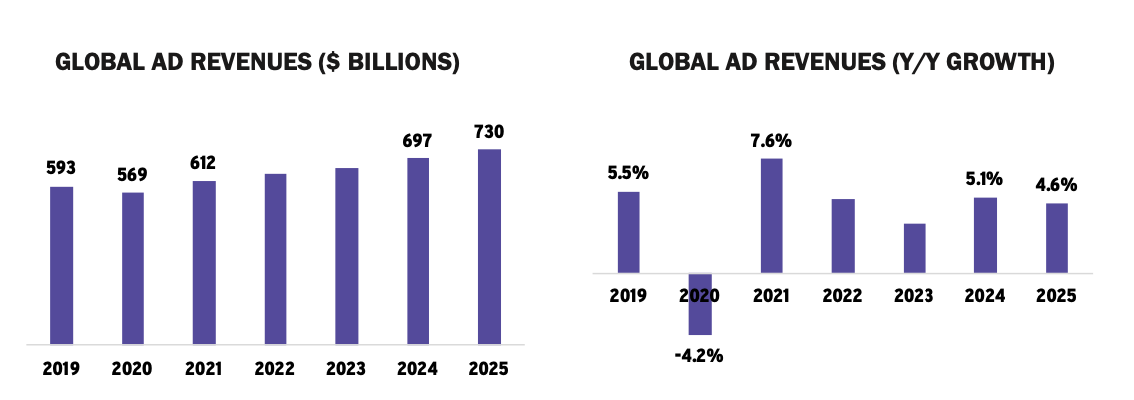
(Fig. 1. Image source: amazonaws.com)
Revenues fell because spending on DOOH campaigns fell throughout the course of the year (Fig. 2) – bucking the continuously rising trend that had seen the DOOH industry witness sustained year-on-year growth over the preceding years.

(Fig. 2. Image source: pqmedia.com)
However, according to recent figures from independent media analyst firm PQ Media, the industry is poised to bounce back quickly and decisively between 2021 and 2025 – thanks to advances in digital technology and, in particular, programmatic offerings.
According to the report, DOOH ad revenue in the US is projected to rebound in 2021, accelerate sharply in 2022, and rise at an 8.9% CAGR to $4.43 billion in 2025 for a 37.1% share of total US OOH ad revenue.
According to President and CEO of the Digital Place-Based Ad Association (DPAA) Barry Frey, this rebound is being fueled by moves towards digitization.
“Specifically, digital platforms, data, targeting initiatives, video screens, digital systems and processes have enabled us to come strongly out of this pandemic situation,” said Frey, who added that programmatic selling of DOOH inventory has also driven up revenue. “Programmatic has demonstrated the flexible and agile nature of [DOOH media] to pause and push schedules, [and] move campaigns to where the intended audiences exist. Additionally, the deprecation of the cookie and IDFA [Identifier for Advertisers] issues are starting to move ad monies to the reliable value of advertising in real world contexts.”
Indeed, more and more brands and SMBs are embracing pDOOH due to the outstanding benefits programmatic ads offer over traditional OOH and DOOH. These include:
Data Driven Advantages: pDOOH is a far more refined approach to outdoor advertising than anything that has come before. Powerful programmatic DOOH platforms enable advertisers to tap into up-to-the-minute data to identify target audiences they want to reach and optimize ad campaigns towards real-world contexts, such as location, time of day, weather conditions, traffic conditions, live results of sporting events, and more.
Speed and Flexibility: Whereas the buying and installation of traditional OOH and DOOH ads can take weeks, pDOOH speeds the process up to a matter of minutes. Rather than having to make repeated direct buys of ad space – which normally involve numerous additional negotiations with middlemen – pDOOH platforms connect media buyers directly with sellers, and the whole bidding, buying, and final display of the ad takes place automatically. This means that advertisers can deliver relevant messages to their target audience much more quickly.
Easily Accessible: Programmatic DOOH platforms level the playing field for businesses of all shapes and sizes, providing advertisers with a simple and convenient platform through which premium inventory can be accessed easily and affordably – even for SMBs. Media buyers can handpick from hundreds of digital billboards and other digital screens situated in locations where their target audience is most likely to be. They can then set conditions for their pDOOH campaigns, bid for space on those screens, and their ads are automatically displayed when all conditions are met.
With all these benefits and more besides, it’s no wonder programmatic DOOH is driving the out-of-home rebound – and that spend on pDOOH is projected to rise to over half a billion by 2022 (Fig.3).
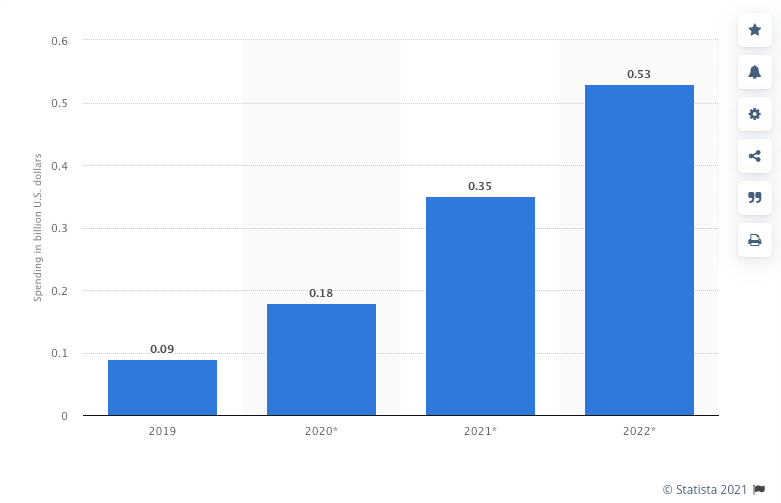
(Fig. 3. pDOOH advertising spending in the US from 2019 to 2022. Image source: statista.com)
3 Ways to Use pDOOH to Engage Consumers
DOOH ads are a fantastic medium for engaging customers while out and about. For one thing, the public trusts outdoor advertising – much more than they do online advertisements. In fact, according to figures cited in The Drum, 58% of consumers see display ads on OOH formats as more trustworthy and relevant than on any other platform. What’s more, according to The Drum’s own survey of over 35,000 respondents, consumers exposed to a brand’s out-of-home advertising are on average 10% more likely to state that they trust the brand the ad is associated with.
With trust levels already high, let’s consider three ways you can use programmatic DOOH to engage your target audience and drive action.
1. Deliver Relevant, Weather-, Location-, and Time-Appropriate Ads
Audience engagement is ultimately the defining factor of a successful advertising campaign. Your goal is to encourage and inspire recipients of your advertising message to do something – be it visit a website, post on social media, take advantage of a promo code, or visit a physical store and make a purchase.
The beauty of programmatic DOOH is that you can increase your chances of inspiring engagement by adjusting your campaigns in response to real-world contexts, such as the weather and/or time of day.
Burger King provides a great example of how to use digital signage to drive action at mealtimes – tapping into pedestrians’ real-time needs and desires throughout the day.
In the morning, for example, digital screens would display an item from the restaurant’s breakfast menu beneath the message “Behold the Breakfast of Kings.”
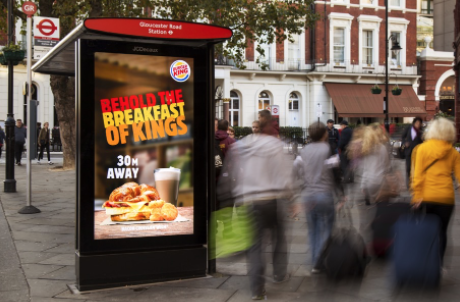
(Image source: ibbonline.com)
In mid-afternoon, cold drinks, snacks and milkshakes were advertised, while at lunchtime, the message “Don’t Be Hangry” displayed beneath the precise time of day – reminding people it’s time to grab some lunch to power them through the afternoon. Brilliantly, the adverts also give a post code for the nearest restaurant, or simply tell consumers that an outlet is just a few meters away.
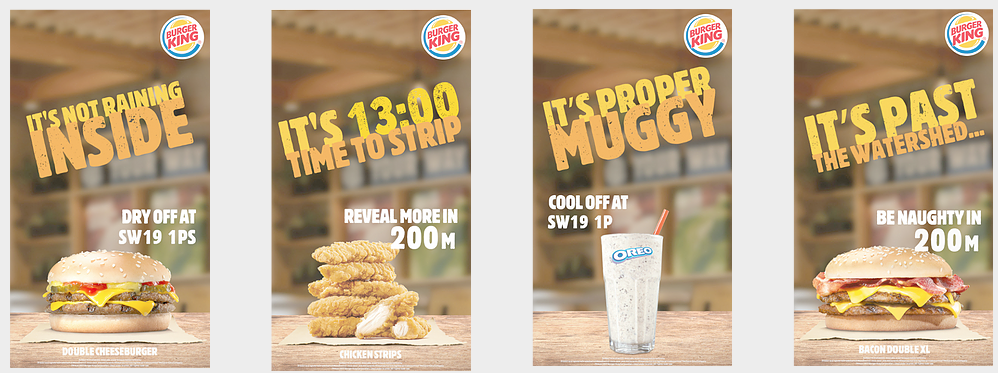
(Image source: thecloudandcompass.com)
The creative also changed depending on the weather – telling people they can “dry off” in-store when it’s raining, or “cool off” with a cold shake when it’s muggy. In all, the displays were optimized based on data inputs for weather, time of day, location, and distance to store – ensuring they were all contextually relevant to consumers.
2. Drive Mobile Interaction
Today, nearly everyone carries a smartphone with them wherever they go – presenting a fantastic opportunity for advertisers to use DOOH to encourage mobile interaction.
QR codes, promo codes, Snapchat codes, social media #hashtags, app downloads – there are endless opportunities to inspire people to take out their phones and start engaging with your brand online.
And it works – according to figures from MRI-Simmons and the Outdoor Advertising Association of America (OAAA), advertisers that use DOOH ads alongside other marketing channels can boost audience reach between 92% and 100%, depending on the medium (Fig. 4).
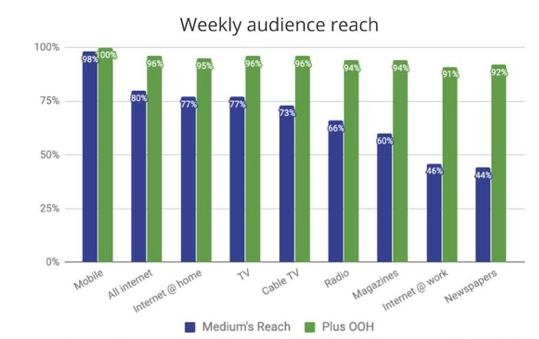
(Fig. 4. Image source: mediapost.com)
With programmatic DOOH, you can go one step further – using data to contextualize and optimize your messages in real-time to your audience’s real-world circumstances and surroundings. For example, the Australian and New Zealand Banking Group (ANZ) launched a campaign that encouraged commuters with time to kill to use it wisely. One ad, for instance, utilized bus timetable data to feature the dynamic headline: “The next bus is due in [X] minutes. Use that time to get on top of your money with the new ANZ app.”
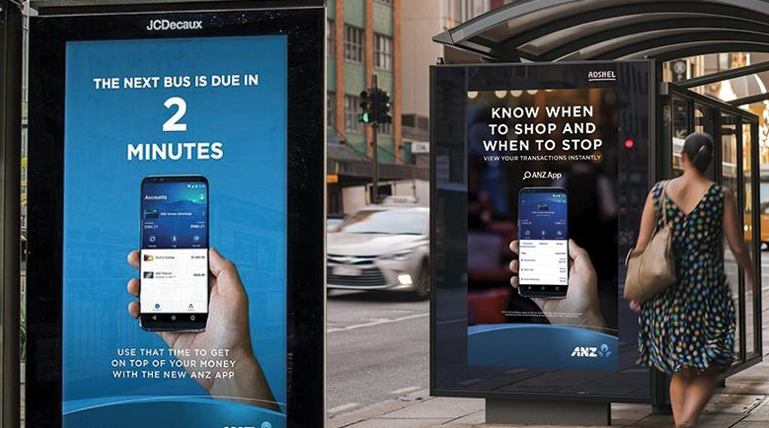
(Image source: oma.org.au)
As PHD’s Jordan Smith, Group Business Director on ANZ, puts it: “This campaign aims to leverage a key time during the week where people are more receptive to financial information, helping them to ‘get on top of their money’ by downloading ANZ’s new app. We expect to see great results from this campaign.”
3. QR Codes
QR codes remain hugely popular amongst consumers and brands alike – and they’re a great way of driving engagement with your outdoor ad campaigns.
A June 2021 survey found that 45% of US shoppers had used a marketing-related QR code in the three months leading up to the survey (Fig.5). 18-29-year-olds (54%) were the most likely cohort to have used a code – though they were shown to be popular amongst all age groups, including a third (31%) of over-65s.
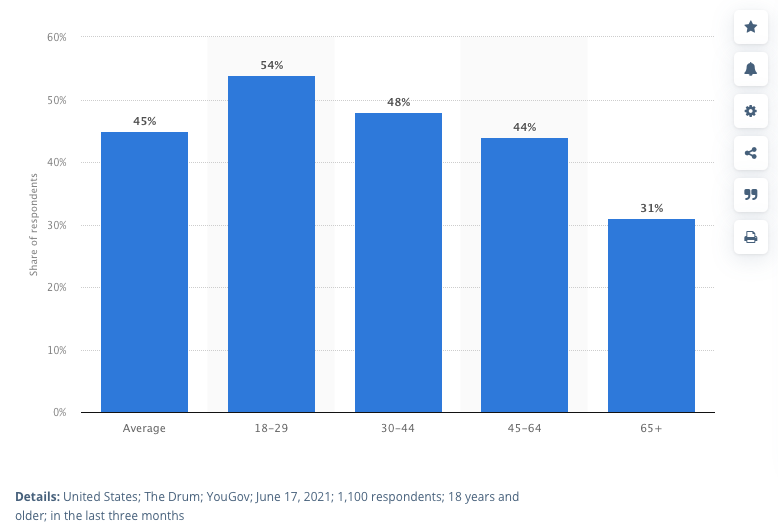
(Fig. 5. Share of Shoppers who used marketing-related QR codes in the US as of June 2021, by age. Image source: statista.com)
You can create QR codes for all sorts of purposes – to access a special discount customers can use online or at your store, to direct consumers to your website or social media channels, or to activate video ads on users’ mobile devices – all of which drive engagement from your DOOH campaigns.
QR codes are simple to embed into your creatives – and when using a pDOOH platform, you can make use of powerful real-time data to make sure those creatives are displaying to the right audience in the right place at the right time, to generate the most engagement possible.
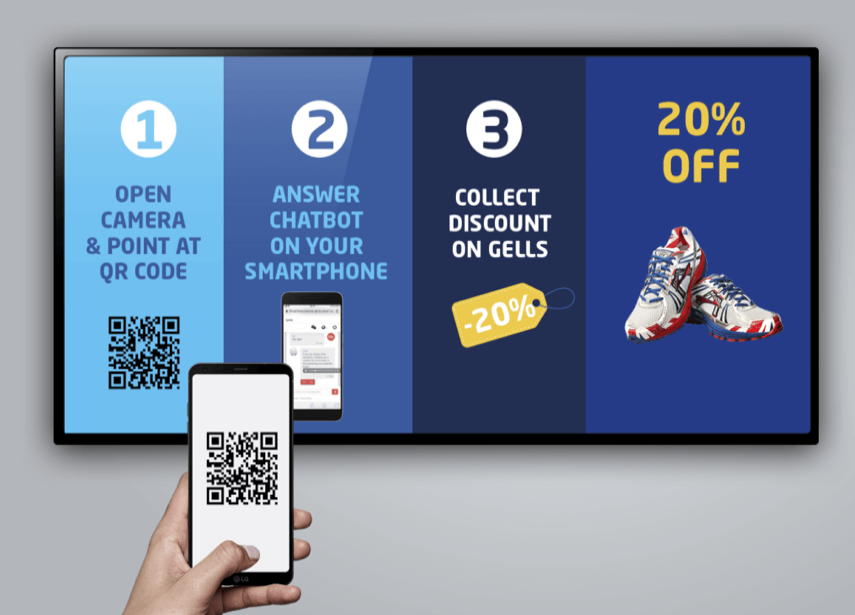
(Image source: google.com)
Make Programmatic DOOH a Part of Your Next Campaign with The Neuron
If you’re ready to run a high-impact programmatic DOOH advertising campaign, you need The Neuron.
Our powerful yet simple-to-use platform allows SMBs to take advantage of programmatic DOOH advertising, with automated bidding and absolutely no middlemen. Choose from a broad selection of premium inventory, upload your creative in a matter of minutes, get real-time analytics to optimize your campaigns on the fly, and start getting the most out of your DOOH advertising today.
Get in touch with The Neuron for a free demo of our programmatic DOOH platform.
